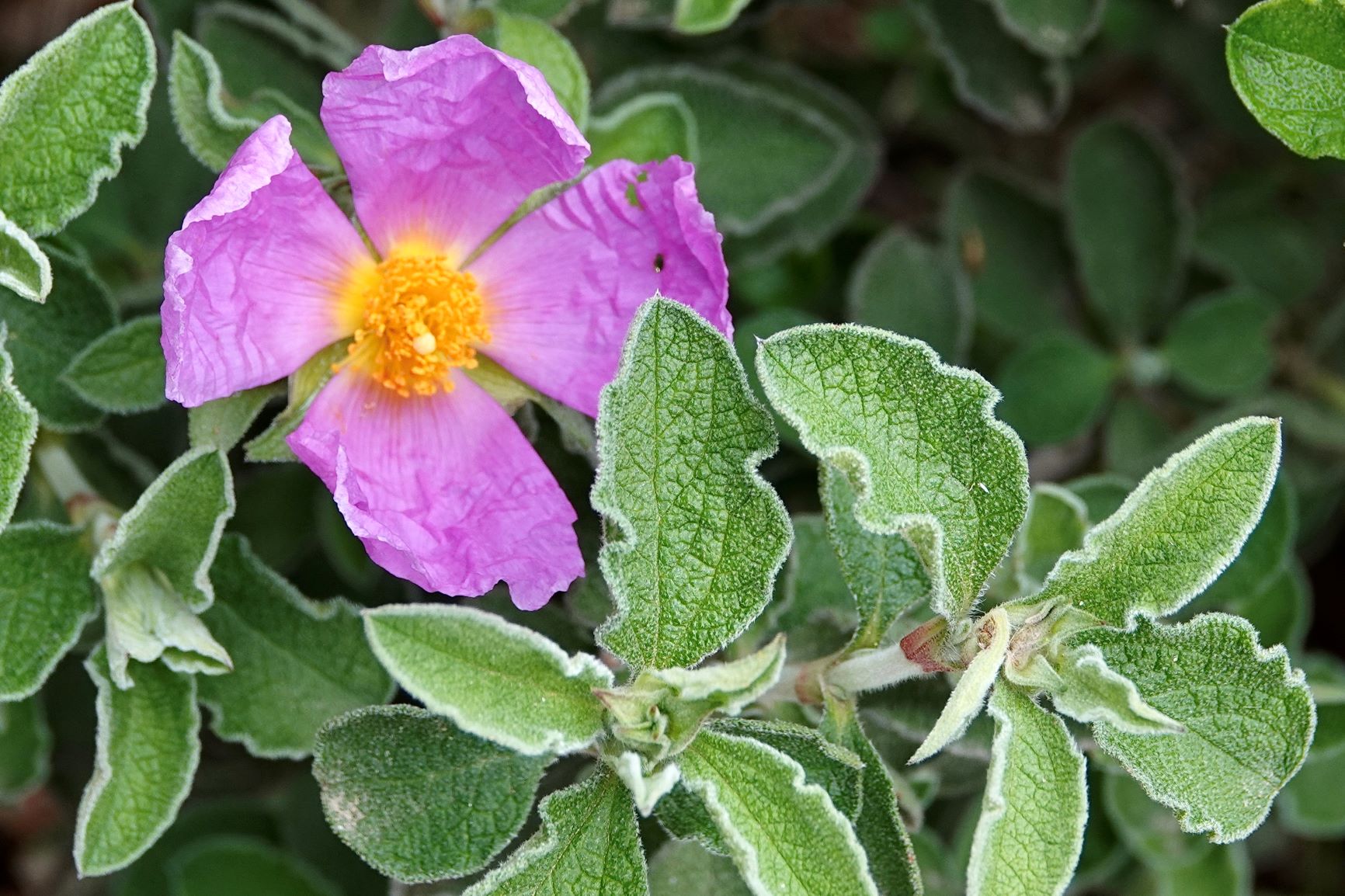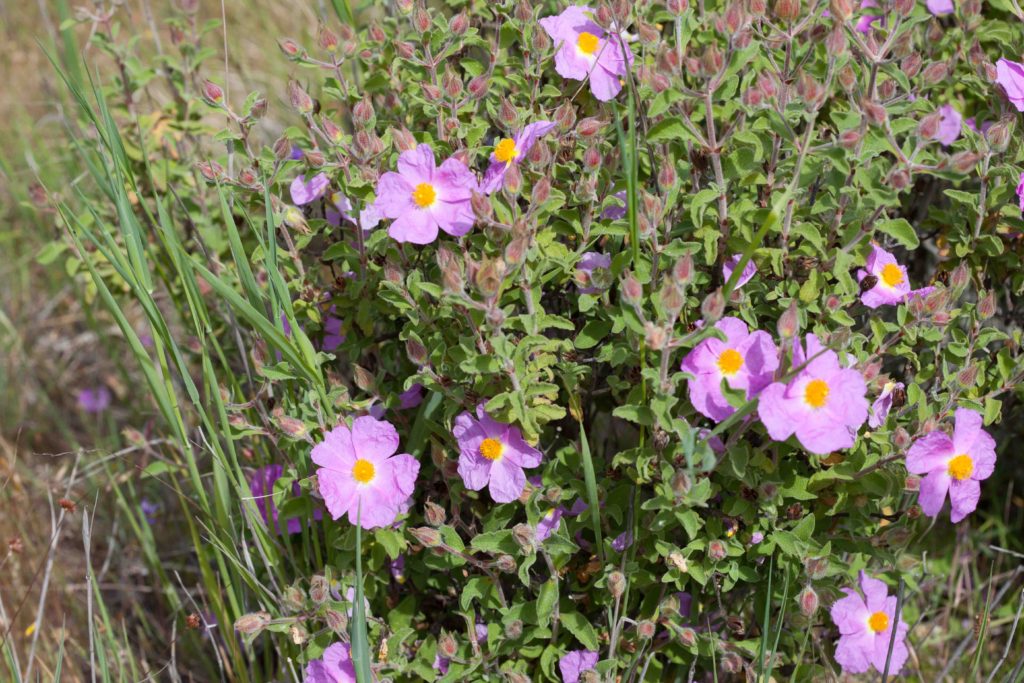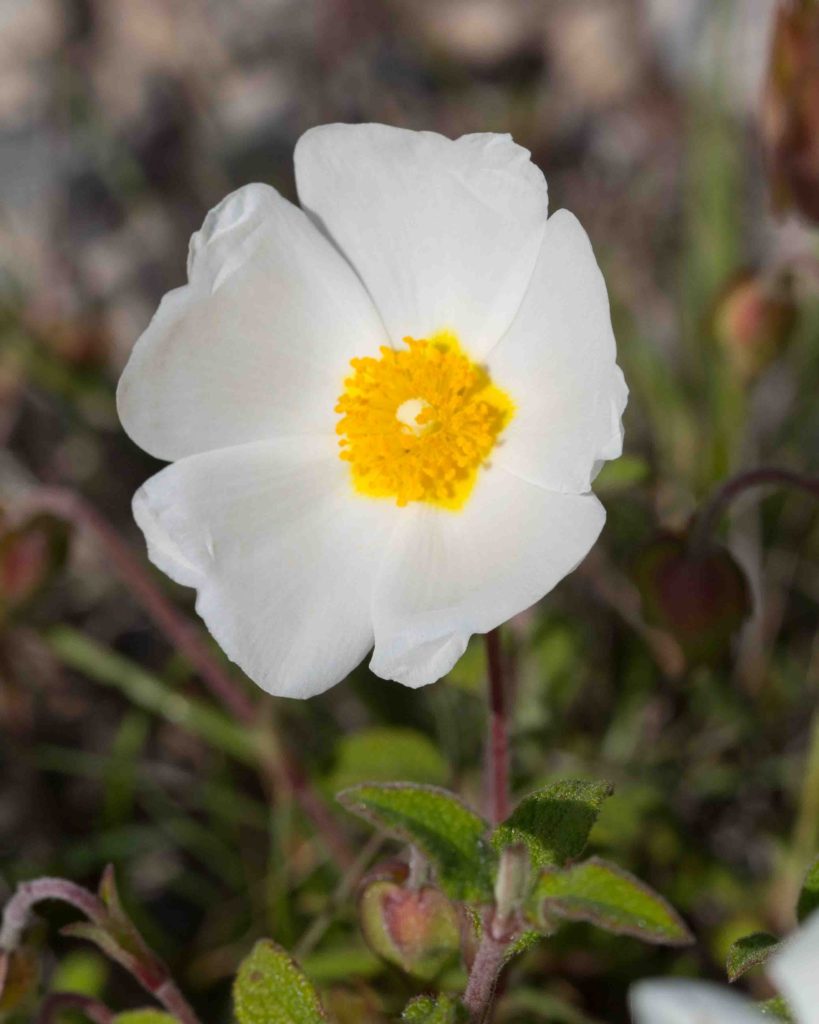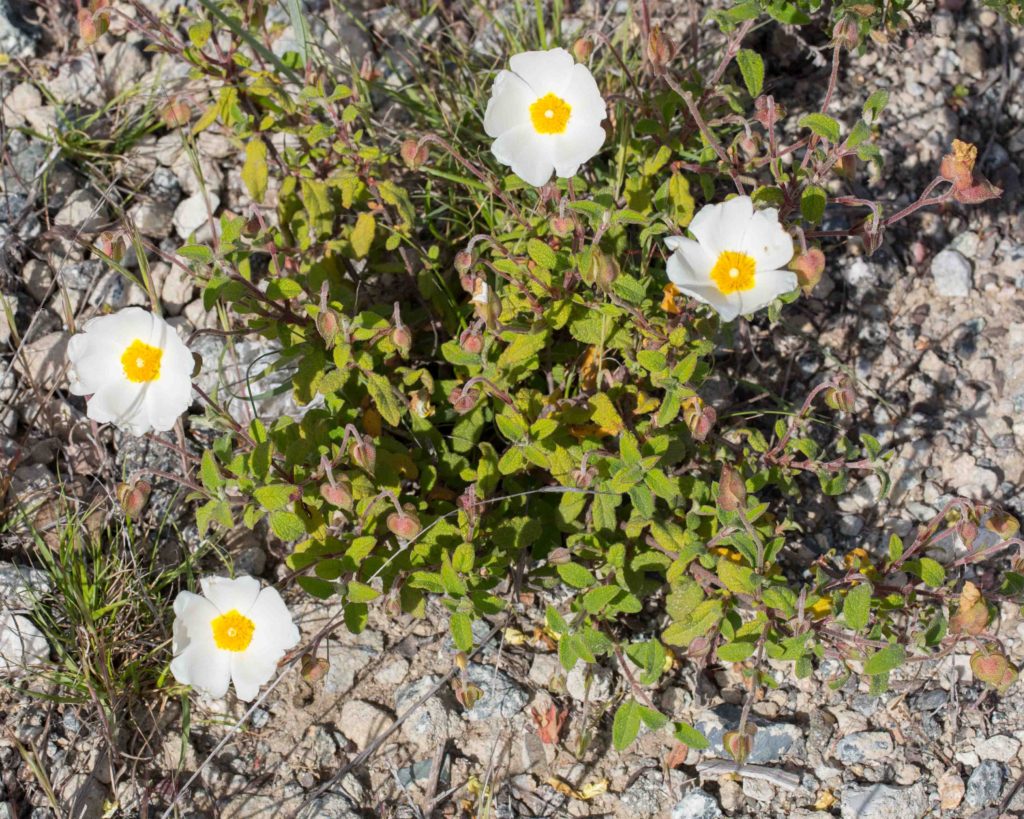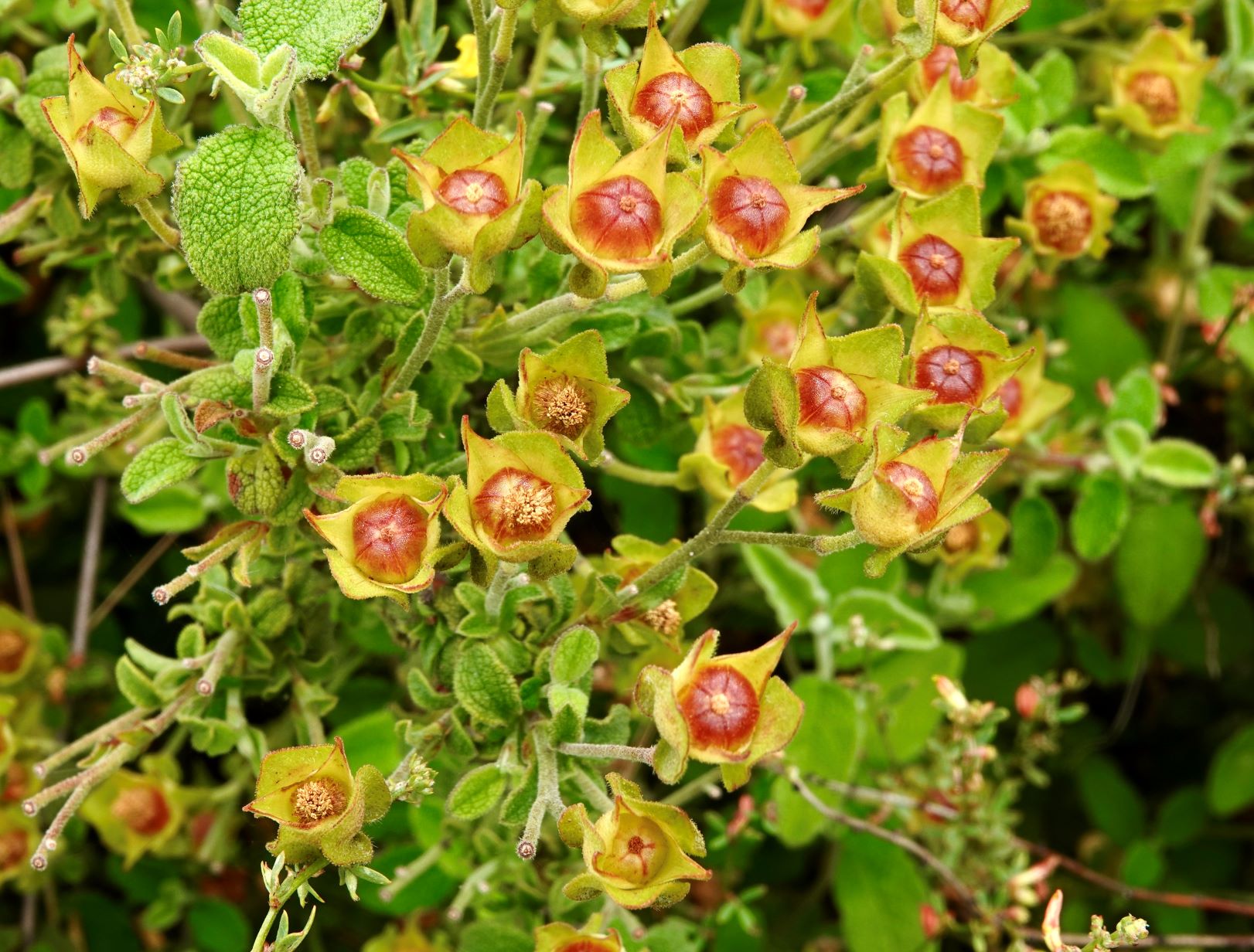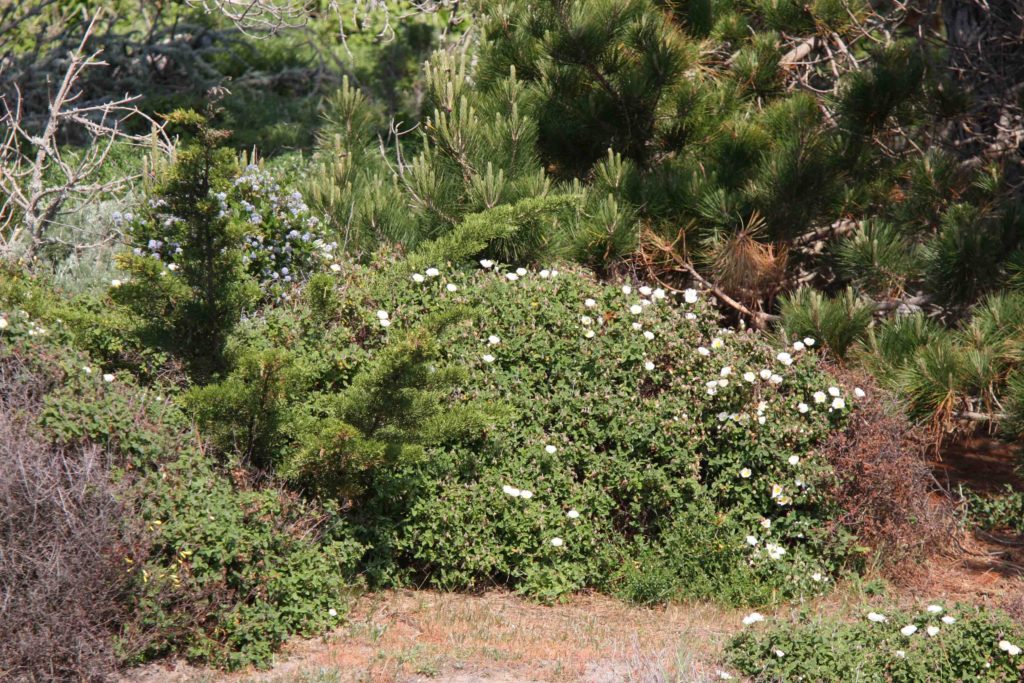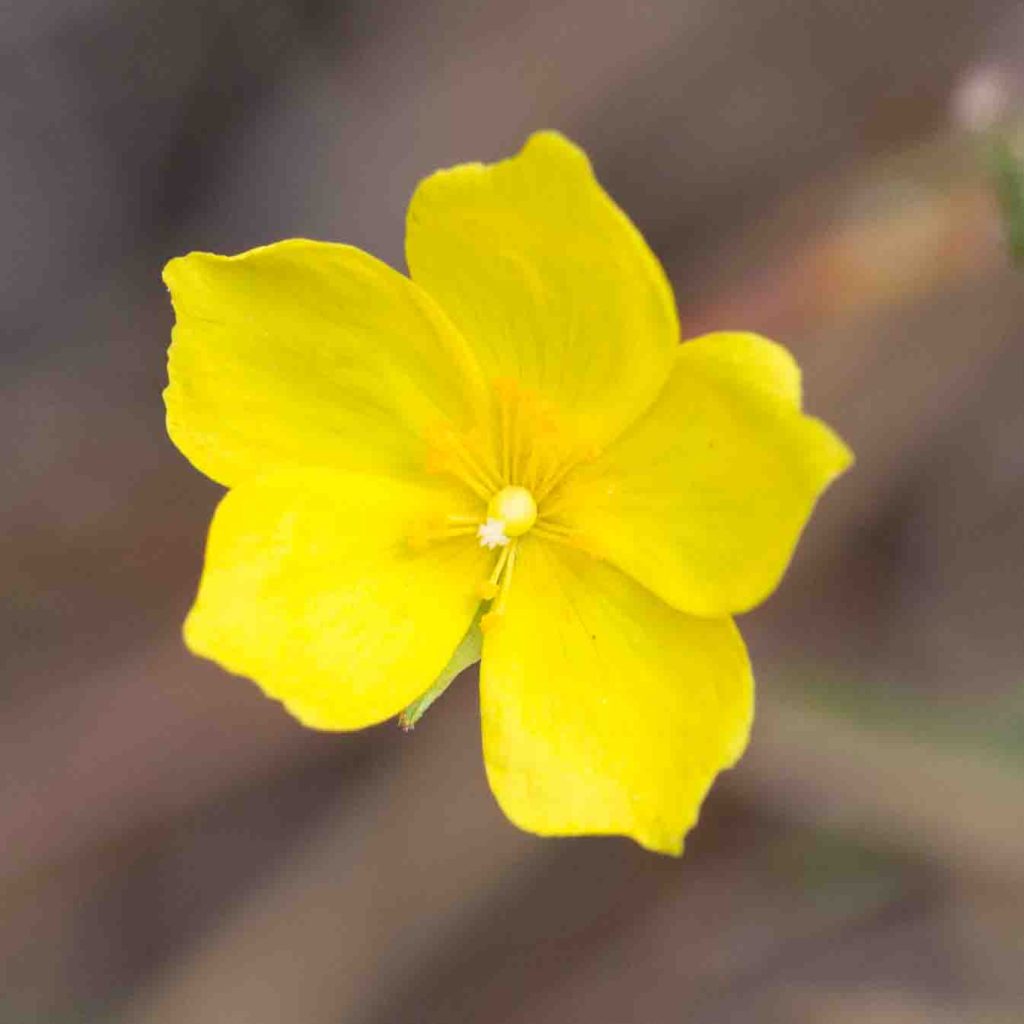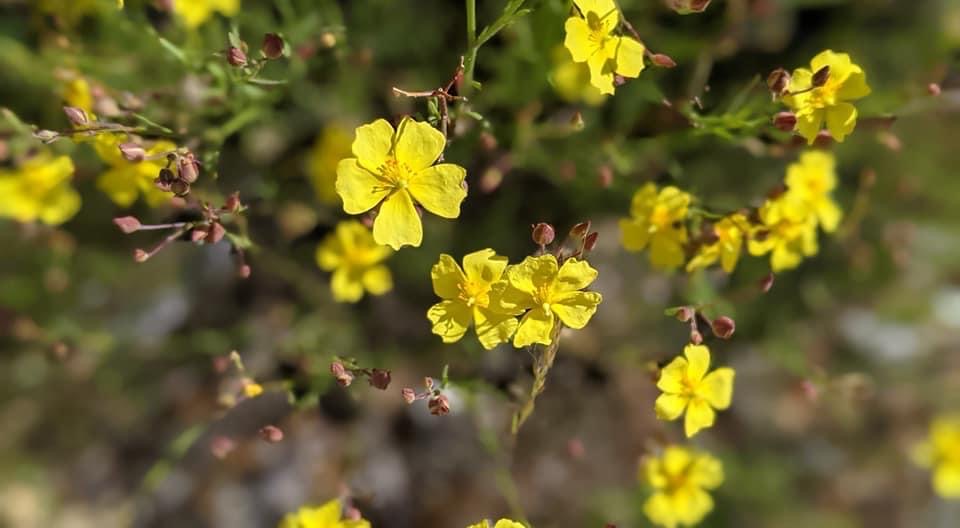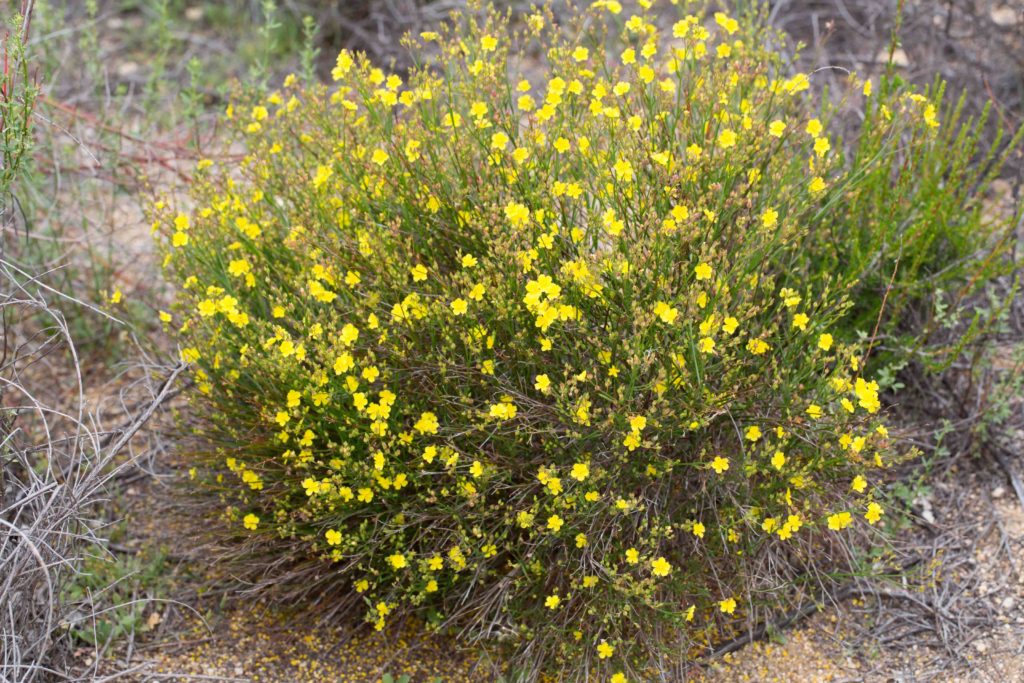Cistaceae: Rock-rose Family
Rock-rose – Cistus incanus
Blooms:
Jan–Aug
Plant Height:
up to 130 cm
Flower Size:
Large
Origin:
Europe
Habitat:
Dry sunny places
Notes:
This cistus is commonly cultivated, and occasionally it escapes and naturalizes. Like other members of its family, it is drought-tolerant and likes open, sunny positions. It produces a profusion of short-lived, bright pink flowers with large, more or less wrinkled petals and many yellow stamens. Leaves are somewhat sage-like (though without the distinctive sage aroma), not sessile, and have one prominent vein from the base. Photo #1 by CJH.
Sageleaf Rock-rose – Cistus salviifolius
Blooms:
Apr–May
Plant Height:
< 1 m
Flower Size:
Large
Origin:
Southern Europe
Habitat:
Sunny, disturbed places
Notes:
Each stem has 1–4 pure white flowers, sometimes with yellow near the base of the petals, and many yellow stamens. Leaves are sage-like, 1–4 cm, ovate to elliptic, with the upper surface wrinkled. Fruits are are brownish, with 5 segments. Photo #3 by CJH.
Montepelier Rock-rose (Cistus monspeliensis), not shown, is similar. However, it has more flowers per stem (1–11). Also, its leaves are linear to lance-linear in shape, and much longer (15–60 cm).
Peak Rush-rose – Crocanthemum scoparium var. scoparium
Blooms:
Mar–July
Plant Height:
10–30 cm
Flower Size:
Small
Origin:
Native
Habitat:
Dry sandy or rocky slopes or ridges or chaparral below 500 m
Notes:
This is the only native on this page. It is a bushy, low, spreading plant with many beautiful, bright yellow flowers, each about 1 cm across with 5 to many stamens. In all the plants of this genus, 2 of the 5 sepals are narrower than the others. In this particular species, the 2 outer sepals are linear, while the 3 inner ones are wide and pointed. Stems are slender and rush-like, but all bear small, linear to narrowly lanceolate leaves. Photo #3 by CJH.
There is another variety (var. vulgare), not shown, which is very similar. However, it is taller (30–45 cm), with more flowers per stem (4–18) and longer outer sepals. It is found at higher elevations (50–1200 m).
